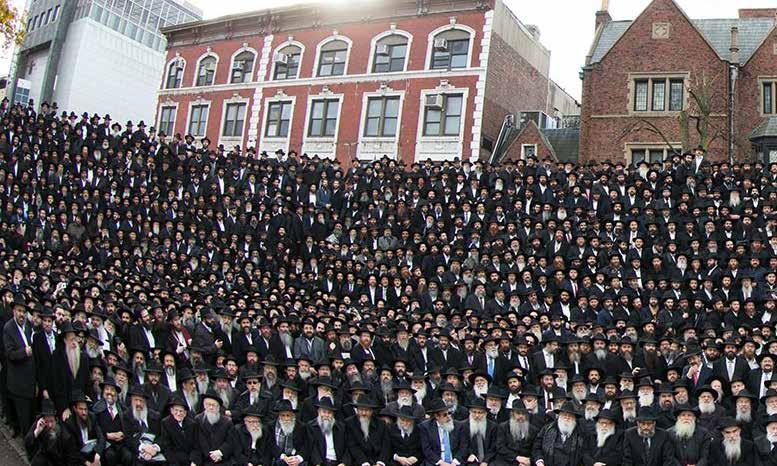
8 minute read
Alumni occasions
ariEl sChNUr AzArIAN ‘13 AlUMNIspotligHt
graduate Helps give
Advertisement
thE GIft of LIfEBy Alan Zeitlin ‘00
The birth of a healthy child is one of the greatest miracles of life. As a fertility nurse for Reproductive Medical Associates of New York, Ariel Schnur gets to help a vast array of women bring that miracle into the world.
Schnur, who graduated from Binghamton University with a degree in nursing said her job offers a glimpse at wonderment.
“It’s extremely rewarding to help build new families for people who have had difficulty getting pregnant,” she said.
Some women come from impoverished or abusive situations. Some may have had cancer treatment or other treatments that affect fertility. There are some from the LGBTQ community. Some roads to become pregnant are longer and more difficult than others and there are a lot of nerves.
“It’s very exciting but also nerve-racking for the person,” she said. “They think that every step might change the outcome or if they eat the wrong thing it’s terrible, or if a taxi hits a bump, it’s terrible. Google is the worst!”
Schnur, 28 did clinical rotations at area hospitals in Binghamton and volunteered as a doula at UHS Hospital. She dealt with teens giving birth.
“I think it’s important to always be compassionate and help others and I realized I wanted to have a career where I would do both,” she said.
One area of research she did was with women who smoked during pregnancy due to addiction and she worked on programs for cessation of smoking. One highlight was to see the birth of quadruplets.
A few of the women she worked with even became friends. She admits it can be an emotional roller-coaster in the joy of families who are able to have children and the difficulty when fertilization doesn’t occur or something else goes wrong at a later stage.
“When it’s a success there is such an overwhelming joy,” she said. “We see many women coming back a second time. When it is not a success, the best comfort we can give them is just to listen and be there for them. There is a great sense of loss. It’s important for the patient to know it’s not something they did wrong and that she shouldn’t blame herself.”
Schnur grew up in Bellmore, Long Island. She met her Sephardic husband at a 4th of July celebration in Great Neck. He proposed to her on a vacation to Disneyland.
Schnur said the family that is built at Chabad is one that makes the college unique.
“Rivky was an extremely critical person in my college career,” Schnur said. “There were no holds barred. You could come at her with any question and she was always warm and had answers and if she didn’t have the answers, she would find them. She was a great mother figure.”
Schnur’s mother, Gail, died in August after a brain aneurism. Schnur said Rivky was instrumental in helping her and was always there for her to talk on the phone. “It is touching to see how Chabad cares about all of the students, even years after they graduate.” Schnur said her desire to help people partly comes from her mother, who was a nutrition coach. Her advice to other students? “Get involved,” she said. “Binghamton is a great place. Chabad is unforgettable, and your time will go by fast. I have so many great memories of being there with great friends. Don’t be afraid to take on an active role.”
Alan Zeitlin teaches English and Journalism at a Brooklyn public high school. As a freelance writer for the past 11 years, his articles have appeared in The Jewish Week, The Journal News and other publications.

JosHuadorFMAN '21 stUdeNtspotligHt
An Unorthodox Boy scout

By Alan Zeitlin ‘00
Joshua Dorfman heard the harrowing noises of vomiting and a person struggling for his life. The 20-year-old Binghamton University sophomore learned that his suite-mate was going into anaphylactic shock after eating something that had cashews in it. No EpiPen was in sight. Dorfman, knocked on doors in his dorm corridor, got one quickly and helped save the young man’s life.
“I found some random girl who had one and it was crazy but I was calm at the time,” Dorfman said.
He chalks up his quick reflexes to being in the Boy Scouts.
Being an Orthodox Jew and being a Boy Scout is a pretty rare mix. But Dorfman doesn’t believe people should fall into boxes. He is an Eagle Scout, the highest rank under the Boy Scouts and he’s spent more than 150 nights in a tent. The experience, he said has been great, setting up eruvs in the woods for Shabbat and answering occasional questions about Judaism.
“It was great to feel like an ambassador and I spoke to people of different religions and cultures,” he said. “There was one person who wanted to be friends with Jews because they heard Jews were saviors and another one who asked if I had horns,” Dorfman said.
Dorfman, 20 was recently among 40,000 fellow scouts at a jamboree in West Virginia, where he ran zip-line operations.
“It can go up to 100 feet,” he said. “It’s amazing. It’s an amazing feeling-like you’re flying. Nobody fell off.”
The event, in which a majority of people were from other countries felt like he was in another city, he said.
Dorfman said not hiking on Shabbos was hard, but he got used to it. He followed in the footsteps of his father, who was also a Boy Scout. One of his greatest achievements? He hiked 65 miles in the New Mexican wilderness carrying 50 pounds of gear on his back.
Dorfman is also a spinning instructor and was a social coordinator for the Student Association as well as office coordinator.
Dorfman lost more than 100 pounds after improving his diet.
“I was a size 52 suit now, I’m a 38,” he said. “I haven’t had a slice of pizza or a bagel in two years.”
He said Chabad’s recipe for success was authenticity.
“I think Chabad is empowering and supportive,” he said. “They’re not judgmental. They educate and it’s up to you. There’s a real feeling of mishpacha. The warmth they bring is amazing.”
Dorfman, who is on Chabad’s Shabbos committee, said he always has something to look forward to.
“I really crave the glow of Friday night Shabbat meals,” he said. “It’s like nothing else.”
He also said he was extremely impressed by Shabbat 1800 where so many students gathered together.
Dorfman, who is majoring in biology and psychology, hopes to become a cardiothoracic surgeon. The graduate of SAR Academy in Riverdale, knows how to make a fire by himself, has excellent navigational and survival skills, and has learned to be calm in high pressure situations.
He’s seen bears before and it turned out okay.
“Brown bears are larger and more aggressive,” he said. “You can’t surprise them.”
the world’s Most Misunderstood Photo
By Rabbi Eli Friedman
If there is ever a contest for “World’s Most Misunderstood Photo,” the annual group photo of the International Kinus Hashluchim in front of 770 Eastern Parkway will surely be a finalist.
When you look at the photo, you could be forgiven for thinking that someone had taken a picture of a Shliach (Chabad rabbi) wearing a black fedora and black suit and then hit copy and paste 6,000 times. Aside from the beard colors (black, white, gray and red) very little differentiates one rabbi from the next and on the surface it seems like a conformist convention.
And that is exactly what it isn’t. It would be an injustice to the Shluchim to believe that they are all the same with identical stories, attitudes or personalities. The beauty in the deluge of black and white is the colorful diversity hidden everywhere in the picture.
You look at one face, you’re looking at a prominent community leader, rabbi and spiritual leader to 2,000 people in a large American suburb. Grinning right next to him is the Shliach in a South American village, a man whose only struggle greater than making a living is the struggle to assemble a Minyan so a local can say Kaddish.
Pan over to the next Shliach and find the chief rabbi of a massive European country. He rubs shoulders with billionaires. And next to him – the Shliach to Nowhere, USA. He can’t rub together two pennies.
In this one picture you have newlyweds, middle-aged parents, fresh grandparents, and patriarchs of massive families with legions of grandchildren and great-grandchildren, often in the hundreds, kinehora.
The guy with the red beard over there spends most of his time behind bars tending to the desperate needs of local Jewish prisoners. The short, salt-and-pepper beard behind him started off as a local youth director at the age of 23 and is still at it, devoted to his third generation of kids 30 years later. (And that short beard is rolled up; it’s two feet long. I’ve seen it!)
Scroll down to that guy there with the black beard. Ten years ago, this guy didn’t know what a Mezuzah was. He was the starting quarterback on his high school varsity team and his chances of ending up a Shliach were as good as his chances of ending up starting for the Cowboys. But here he is, flush with excitement, living the dream (the Shliach one, not the Cowboys one). The very tall one next to him was a successful business attorney who yearned to do more, so he


